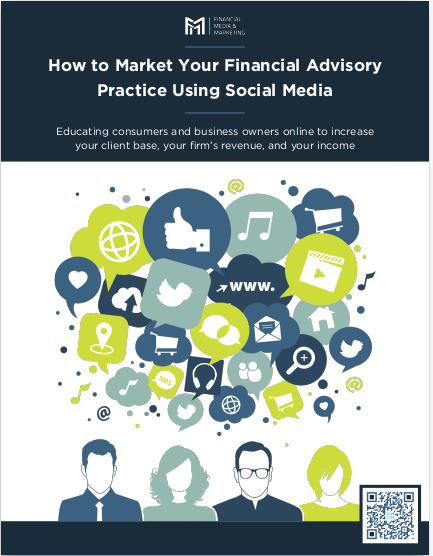Key Takeaways
-
A visually pleasing website isn’t enough in 2025—your website must actively support your credibility, messaging, and client conversion.
-
Strategic layout, content structure, and user flow matter more than flashy aesthetics when your goal is to generate business.
Why Your Website Is More Than Just a Digital Brochure
If you’ve been spending hours deliberating over color schemes, icons, or animations, you may be missing the bigger picture. In 2025, a professional website is more than an online presence—it’s your best-performing sales representative. And it works 24/7.
Your website should lead users through a specific journey: building trust, conveying expertise, and encouraging action. Design matters, yes. But it should serve your content—not overshadow it.
Shift the Focus from Visual to Functional
A common pitfall is thinking that a modern look automatically equals effectiveness. But beautiful websites can—and often do—underperform if they don’t have a functional purpose beyond aesthetics.
Instead, concentrate on:
-
User Intent: What do your visitors want when they land on your site?
-
Clear Value Proposition: Can they immediately see how you help?
-
Calls to Action: Are the next steps obvious and accessible?
-
Trust Builders: Do you use testimonials, certifications, or case results to reinforce credibility?
These aren’t design trends. They’re foundational components of a sales-optimized website.
Content Structure That Builds Trust
Your content hierarchy should reflect how people make decisions. At every point in their journey, a potential client or partner should find the information they need—without friction.
Start with clarity:
-
A concise hero section that says what you do and who you serve.
-
A breakdown of services or solutions, preferably with benefits.
-
A clear explanation of your process or method.
-
Trust indicators like logos, affiliations, or awards.
-
An invitation to connect or take action.
Each of these sections should answer a mental question your reader is already asking.
Stop Treating Your Homepage Like a Portfolio
A homepage isn’t your resume or a portfolio of your best designs. It’s the first step in a conversation. You wouldn’t begin a business meeting by showing slides of colors and icons—you’d talk about results.
Apply the same mindset here. Think of your homepage as your pitch, not your gallery. Your messaging should immediately resonate with the visitor’s problem and how you solve it.
You can still include visuals, but make sure they support the narrative, not replace it.
Eliminate the Dead Zones on Your Pages
Every section of your site should lead to something: a decision, a discovery, or an action. Dead zones—pages or blocks that serve no interactive or informational purpose—distract and weaken your message.
Examples of dead zones include:
-
Decorative carousels with no context
-
Blank space without directional cues
-
Testimonials placed too far from relevant service descriptions
-
Blog pages with no lead-ins or summaries
Streamline everything. Each section should answer a question or lead to another step. That’s how websites sell.
CTAs Are Not Just Buttons—They’re Strategic Choices
In 2025, users are more selective about the actions they take. Your call to action (CTA) must be contextual, relevant, and well-placed.
Consider diversifying CTAs across the site:
-
“Schedule a Call” near services
-
“Download a Summary” in resource sections
-
“See the Results” after a case study
-
“Connect With Us” after social proof
You’re guiding a decision-making process, not pushing a product. Good CTAs understand the user’s state of mind and offer a logical next step.
Load Speed and Accessibility Still Matter
It’s 2025, and load times are non-negotiable. If your website takes more than three seconds to load, you’re already losing leads. Visual elements like high-resolution video, large background images, or interactive elements can slow performance.
Equally important is accessibility. Ensure your website meets basic accessibility standards:
-
Use readable fonts and appropriate contrast
-
Provide alt text for images
-
Ensure keyboard navigation
-
Make mobile interactions seamless
Accessibility isn’t just ethical—it’s strategic. It increases your reach and user satisfaction.
Don’t Hide Important Information Behind Complex Menus
Layered dropdowns and complex site structures slow down user decisions. Keep your navigation flat and intuitive.
You should aim for:
-
No more than five primary navigation items
-
Clear page names—no jargon
-
Visible contact or inquiry buttons at all times
The more work someone has to do to find what they need, the faster they’ll leave. Simplicity converts.
Invest in Conversion Copy—Not Just Design Copy
Design copy describes your brand. Conversion copy activates your visitor. There’s a significant difference.
Your messaging should:
-
Anticipate objections and answer them
-
Present benefits, not just features
-
Use client-focused language (“you” not “we”)
-
Be skimmable and concise
Well-crafted headlines, strong subheaders, and clear body content do more for sales than flashy animations ever will.
Funnel Traffic, Don’t Just Capture It
In 2025, capturing someone’s attention isn’t enough—you have to direct it.
Use content funnels to move users toward key actions:
-
Landing pages for specific service types
-
Educational content that builds credibility and trust
-
Strategically placed CTAs depending on where users are in their journey
Even blog posts should push readers toward interaction, not just scroll and leave.
Measure What Converts—Not What Looks Good
It’s tempting to track aesthetic metrics: bounce rate, time on page, or scroll depth. But those don’t tell you if your website is working as a business tool.
Instead, measure:
-
Conversion rates by page
-
Click-through on CTAs
-
Heatmaps and session recordings for behavioral data
-
Lead form completions
Data gives you the truth. And the truth isn’t always pretty. But it helps you improve results.
Establish Authority First, Aesthetics Second
Your credibility is your currency. A well-designed site that fails to establish your authority wastes opportunity.
Focus on building authority through:
-
Clear bios and credentials
-
Thought leadership content
-
Case studies or results
-
Testimonials with full names and roles (when possible)
Trust happens before a design is admired. You can’t shortcut this.
Search Visibility Is Still a Priority
Search engine optimization (SEO) isn’t dead—it’s just evolved. If no one finds your website, it doesn’t matter how well it’s designed.
SEO in 2025 prioritizes:
-
Search intent-based content
-
Proper on-page structure
-
Fast mobile load times
-
Secure protocols (HTTPS)
Organic visibility brings leads without constant ad spend. It also builds long-term traffic that compounds.
When to Reevaluate Your Website
Not every website needs a redesign. But every website needs regular evaluation. You should review your site:
-
At least once every 6 months for content freshness
-
Every 12 months for performance audits
-
Whenever you pivot your service offering
-
If you experience a decline in qualified leads
If your website is no longer reflecting your expertise or bringing in meaningful action, it’s not doing its job.
Let Your Website Work Smarter So You Don’t Work Harder
You don’t need a work of art. You need a website that guides visitors, builds trust, and converts attention into action. That means prioritizing clarity, speed, purpose, and strategic content.
When your website does its job well, it becomes the strongest member of your sales team—consistent, tireless, and effective.










